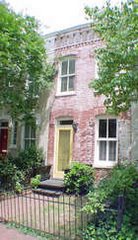
 In a riveting display of first-rate scholarship, Benton-Cohen (history, Georgetown Univ.) shows how entangled ideas of race and nation shifted as conditions changed in the place that became Arizona's 6000-square-mile Cochise County. She traces tumultuous interactions among Indians, Mexicans, Europeans, a smattering of Chinese, and a few blacks who grappled to civilize the land, one another, and themselves in the territory acquired from Mexico in the 1853 Gadsden Purchase. To solidify their grasp, Benton-Cohen explains, the increasingly dominant groups used an ideology of a self-constructed Americanness that combined antilabor, industrial capitalism with white supremacy to define the place and its peoples. Her complex story of community creation and cleaving details the hardening of race as a community divider and determiner of the status and norms of class, family, and gender. She unmasks many fictions in the invented political economy touted in the imagined identity of "white Americans." Telling more than local or regional stories, this is essential for all those deeply concerned with U.S. history, race relations, and society.-Thomas J. Davis, Arizona State Univ., Tempe.
In a riveting display of first-rate scholarship, Benton-Cohen (history, Georgetown Univ.) shows how entangled ideas of race and nation shifted as conditions changed in the place that became Arizona's 6000-square-mile Cochise County. She traces tumultuous interactions among Indians, Mexicans, Europeans, a smattering of Chinese, and a few blacks who grappled to civilize the land, one another, and themselves in the territory acquired from Mexico in the 1853 Gadsden Purchase. To solidify their grasp, Benton-Cohen explains, the increasingly dominant groups used an ideology of a self-constructed Americanness that combined antilabor, industrial capitalism with white supremacy to define the place and its peoples. Her complex story of community creation and cleaving details the hardening of race as a community divider and determiner of the status and norms of class, family, and gender. She unmasks many fictions in the invented political economy touted in the imagined identity of "white Americans." Telling more than local or regional stories, this is essential for all those deeply concerned with U.S. history, race relations, and society.-Thomas J. Davis, Arizona State Univ., Tempe.********************
Publisher's Weekly loves it, too: In 2005, a, rancher and newspaper editor named Chris Simcox set out to maintain the border between the southwestern states and Mexico. He and his Minutemen Civil Defense Corps, dedicated to reporting undocumented migrants crossing into the U.S., were merely the latest in a lineage of self-appointed patriots patrolling the border. Nearly 100 years earlier, Harry Wheeler, an Arizona sheriff, stormed through Cochise County asking illegal residents, “Are you an American, or are you not?” before rounding them up in the Bisbee Deportation. At the turn of the last century, Cochise County represented the “New America” that emerged from the nation's incorporation of northwestern Mexico, the immigration of Europeans to work as miners and the passage of constitutional amendments loosening the racial strictures around citizenship. Benton-Cohen uses the backdrop of the Wild West, with its bustling commerce and growing population, to wage a discussion on racial division and the power of “white privilege”—even where the black-white dichotomy didn't necessarily exist—in this richly detailed anthropological look into the creation of racial boundaries and their application in present-day immigration reform debates. (May)


1 comment:
Great bllog
Post a Comment